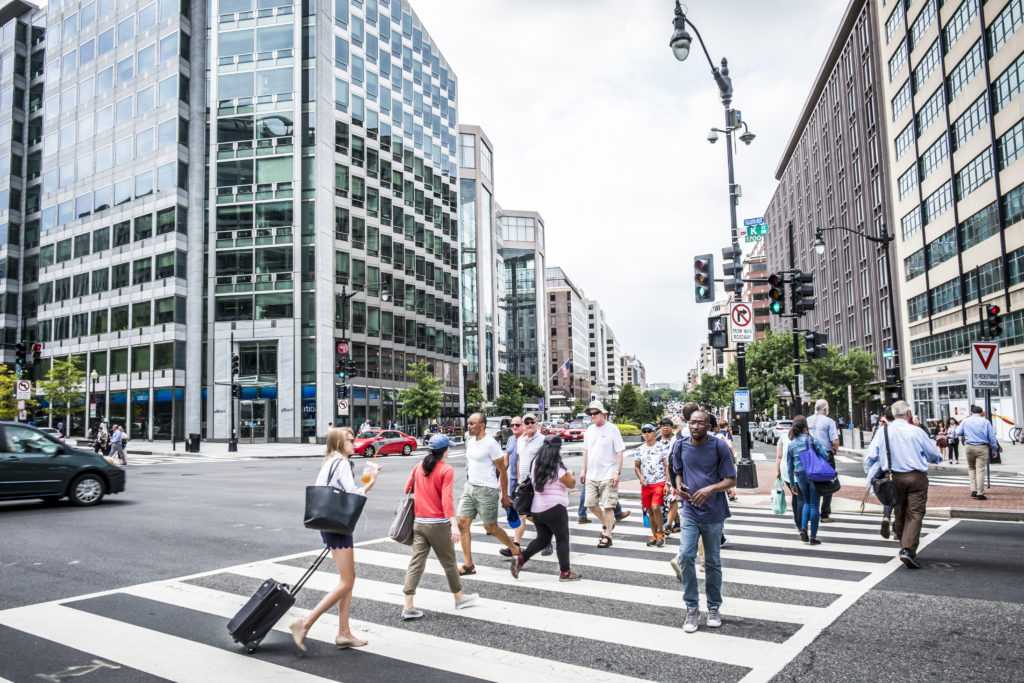Championing sustainability and climate action in cities requires city governments, companies, and organizations to collaborate to achieve their environmental and social goals. Bridging these public and private sector programs is no easy task, but luckily, there are thousands of people across dozens of U.S. cities transforming the way in which local governments collaborate with other stakeholders who are ready to tackle climate change. Marshall Duer-Balkind, an IMT alumnus, is one of these individuals on the ground, ready to make public-private partnerships easy.

In this recent Q&A, Marshall shares how his current role as a Sustainability Analyst at Integral Group, a global deep green engineering & consulting firm that specializes in driving decarbonization and net-zero energy buildings and communities, as well as his role as Co-Chair of D.C.’s Building Energy Performance Standards (BEPS) Task Force, is bridging his private and public sector experience to advance decarbonization in D.C.
Was there a defining moment in your life when the reality of climate change became personal to you? How does the current work that you do at Integral address some of these climate challenges?
The moment when I really began to understand the impact of climate change and how it was really going to hurt humans was after Hurricane Katrina in 2005. After Katrina, I decided to take some time off school and go down to New Orleans and do relief work.
That was the moment that I started seeing the human face of climate change. This was a storm of epic magnitude and I was working side-by-side with people who had been deeply hurt and had lost everything. It left Ward 9 of New Orleans—one of the areas that had one of the highest rates of black homeownership in the country—completely devastated. I saw the greatly disparate impact, even in just one community, that climate change is having. When I went back to grad school to get more technical skills to really work on climate issues, I came to understand that the best thing that I could do was to start focusing on renewable energy and energy efficiency. That’s how I started working on energy issues and ended up working at IMT.
In terms of how my current work addresses those challenges, I’m now in the private sector on the consulting side. We’re doing integrated climate change mitigation and adaptation plans, to help communities and organizations think through ways of making a meaningful reduction in their emissions or fully decarbonizing, and adapting to the now inevitable impacts of a changing climate. We are also doing transformative net-zero carbon engineering at the building and campus-scale—we’re starting to see large institutions wanting to decarbonize quickly, and we are delivering and implementing plans to cut emissions 80-98% within a decade, with reasonable financial paybacks.
“We have to make changes across the entire building stock, across the entire energy system, and that’s going to require working through policy and regulation in ways that are cost-effective and that respond to the market…”
What must be done to address the climate crisis is technologically feasible, but can often seem politically impossible. So as we expand the realm of what seems possible, we expand the realm of what can happen, and what can then be required, as well. That’s what my work, and the work of IMT, is all about: we have to make changes across the entire building stock, across the entire energy system, and that’s going to require working through policy and regulation in ways that are cost-effective and that respond to the market, but that really are moving the needle on existing buildings, in particular.
How did your time at IMT influence your career trajectory?
The truth is that IMT has created my career trajectory, and I credit the time I got at IMT with really setting me on the course that I am on today. Beginning in 2011, IMT sought to embed people in city governments to help them adopt and implement benchmarking policies, and they hired me to get stuff done at the D.C. Department of Energy & Environment. Often, cities struggle with not having enough staff and resources, and having that additional person funded externally can really help move things along—I think it was really transformative.
There were a lot of folks in DC who didn’t believe the benchmarking law was going to work and didn’t really believe it was going to happen. Now there’s 30-plus cities with similar laws on the books, a number of them based very much on the work IMT did in D.C. I was then hired by the city to continue that work, and that allowed me to work on a number of other city projects, and on a broader scope of issues, which led me to my current role. I owe all that to the extremely strong foundation and start that I got from IMT.

What are some notable changes or trends you’ve seen in DC local leadership on sustainability over the time that you’ve worked in DC? How do you predict DC leadership will change in the next 5-10 years?
Speaking specifically to my experience with DC, I think one of the big changes over the past decade is the move towards using data to make better decisions, making that data transparent to the public, and to have planning that is based on data. I think what we tried to do that with DC’s benchmarking law, and with the Clean Energy DC Plan [DC’s Climate and Energy Action Plan]. Then with the second iteration of DC’s sustainability plan, Sustainable DC, we added some rigor to our energy and emissions targets and said, ’Okay, this is what can be achieved and these are the goals that should be set, or adjusted, to still be ambitious but more realistic or possible.’ That has been a really positive trend that I saw in DC and that I’m starting to see in other cities – this leadership and responsibility to ground things in data so that it’s not so pie-in-the-sky.
The other big change I’m seeing that I’ve seen over my time in DC is a real shift to saying, “We need to monitor and really regulate existing building usage.” New construction policies can hold energy and emissions flat—that’s what California has done for the past 30 years with Title 24—but they can’t dramatically reduce emissions. That’s why we have to start regulating energy use in existing buildings and switching to renewable energy sources.
What are the two actions that you think DC local government should take to see reduced carbon emissions and improved energy efficiency?
One of the two big actions that governments should take is implementing net-zero energy codes—the Clean Energy DC Plan calls for DC to have a net-zero energy code for new construction by 2026, but the City hasn’t actually implemented a policy in that direction. Doing so would be action number one.
The second action is improving the performance standards policy for existing buildings to include decarbonization. When we wrote the performance standards, we were really thinking about energy efficiency. This is important, but the real issue is decarbonization and getting people off natural gas, off fuel oil, and onto renewable electricity at a large scale. Once you’re running buildings and campuses with near-100% renewable electricity, you don’t have the massive losses in combustion and distribution that you have with conventional electricity, and with older steam systems. Combine that with the efficiency of modern heat pumps, and we’re looking at two hundred, three hundred percent efficiency improvements in total thermal energy demand over business-as-usual through this kind of strategy.
To read more staff profiles from IMT staff and alumni, visit our news and stories page.
